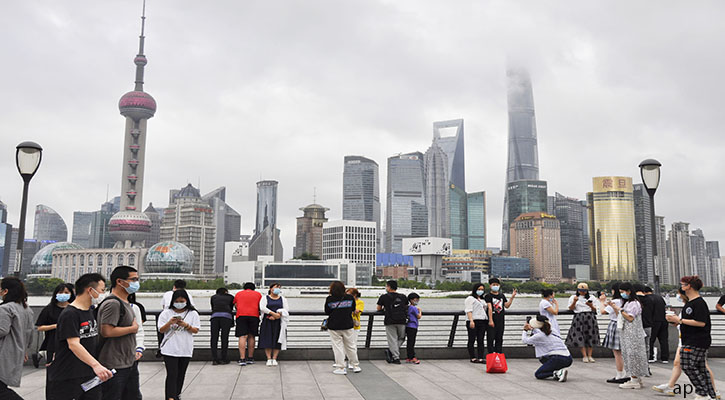
We published the latest A Global Guide to Strategic-Beta Exchange-Traded Products to provide an update on the state of the global strategic-beta ETP landscape, framed using our latest strategic-beta and index attributes. Here’s an excerpt of the report with an Asia-Pacific focus. For further details on the Global landscape, please refer to the full report here.
Strategic beta is an active approach to building a portfolio implemented on a systematic manner. Over most of the past decade, the strategic-beta ETP space grew more rapidly than the broader ETP market. However, more recently, these products' market share gains have stalled and the overall quantity of strategic-beta funds has decreased in most markets we examined —a sign that this segment has reached maturity.
In the U.S., where the lion share of strategic-beta ETPs sits (89% of global market share in assets under management), the space continued to see healthy net flows in 2022 but had a net reduction of 20 strategic-beta ETPs. Whereas, in the Asia-Pacific region, strategic-beta ETPs clocked in an organic growth of 18% in 2022, with a net increase of 44 strategic-beta ETPs.
A Look at the Asia-Pacific Landscape
Asia-Pacific strategic-beta ETPs' organic growth clocked in at 18% in 2022, faster than 2021's 12% organic growth rate. However, volatile equity markets and foreign-exchange movements in Asia-Pacific pushed the headline strategic-beta ETP assets down slightly by 0.6% to $53.5 billion. Following the pattern of the last two years, growth was uneven across markets in the region. Australia, China, India, and Taiwan were the key growth drivers in terms of strategic-beta product offerings or assets while other markets continue to show signs of maturation in the strategic-beta field.
Japan remains the largest strategic-beta ETP market in the region with $24.3 billion of assets but experienced negative organic growth of 0.6% in 2022. Recall that the Bank of Japan's ETF purchase came to a halt since April 2021 and the full-year effect has been felt in both the broader Japanese ETP market and the local strategic-beta ETP market. The weak Japanese yen, which depreciated 13% against the U.S. dollar in 2022, drove both the headline broader Japanese ETP market and the local strategic-beta ETP market down by 17%.
Taiwan had a strong year in the strategic-beta ETP market and ended in second place in the region. Taiwan's strategic-beta ETP market clocked an organic growth rate of 110%, putting assets at $12.4 billion. Australia, despite dropping to third place in the region, had a decent organic growth rate of 16% in 2022 with $9.1 billion of strategic-beta assets.
Sustainable Strategic-Beta ETPs Skew to One Product in the Region
As of the end of 2022, sustainable strategic-beta ETPs accounted for 9.2% total assets in strategic-beta ETPs, similar to 8.5% in Europe. However, the idea and popularity of combining strategic-beta and sustainability in Asia-Pacific is very skewed toward one product, the Cathay Sustainability High Dividend ETF (00878), available to Taiwan investors. This Cathay ETF is one of the seven strategic-beta ETPs in the region identified as sustainable ETPs using the "Sustainable Investment—Overall" datapoint in Morningstar Direct. Its $4.5 billion of assets represents 91% of the total assets of these seven ETPs. The idea of combining strategic-beta and sustainability does not appear to be a universal trend in the Asia-Pacific region.
Strong Flows Into Strategic-Beta Products From Australia and Taiwan Investors
The year 2022 saw the strongest annual net inflows into the strategic-beta ETPs in the region in history, at $9.8 billion, thanks to the strong inflows into products domiciled in Australia and Taiwan. The two markets accounted for 95% of the region's net flows in 2022. Taiwan was the key contributor, with
$7.8 billion going into strategic-beta ETPs in the local market.
Japan had been a key contributor to the growth of strategic-beta ETPs in Asia-Pacific for years with Bank of Japan's ETF purchases. In 2022, the market's strategic-beta recorded annual net outflows, the first time we noted this in the history of Morningstar's strategic-beta products landscape report.
Asia-Pacific Strategic-Beta ETP Quarterly Asset Flows
Source: Morningstar Direct, Morningstar Research. Data as of Dec. 31, 2022.
Quality Trumps in Assets and Dividend Catching-up with Very Strong Inflows
ETPs belonging to the Quality strategic-beta group continued to rank at the top of the region's strategic-beta ETP assets, accounting for 47%, or $25.2 billion. However, this cohort of products recorded organic growth of only 2%. Meanwhile, assets in the Dividend strategic-beta group recorded strong organic growth of 47%, attracting $7.8 billion of net inflows in 2022 and putting assets at $21.2 billion. They accounted for 40% of strategic-beta market share.
Ranking of Asia-Pacific Strategic-Beta ETPs by Strategic-Beta Group
Source: Morningstar Direct, Morningstar Research. Data as of Dec. 31, 2022.
Complexity Means Due-Diligence Burden
The proliferation of these strategic-beta strategies and their complexities have created a significant due-diligence burden. Investors should understand the nature of these strategies, their potential pitfalls and the fees that they charge before investing. In particular, it is important to get a grasp of the factors that the strategy is designed to exploit and how these factors are being implemented to form the resultant portfolio.













.png)








